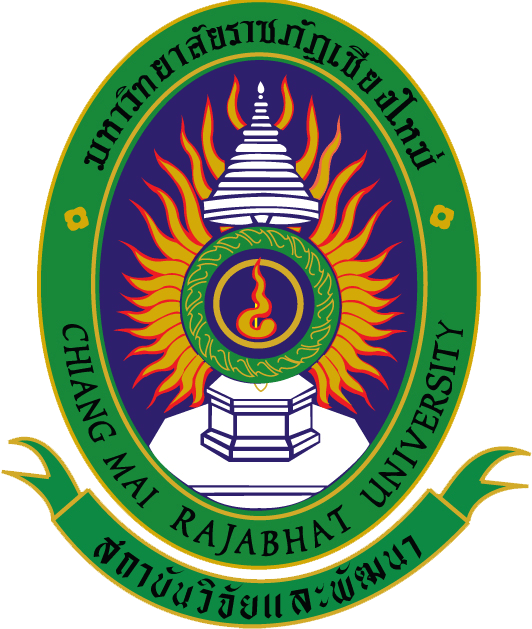
ระบบสารสนเทศงานวิจัย สถาบันวิจัยและพัฒนา มหาวิทยาลัยราชภัฏเชียงใหม่
Research Information System(RIS)
การพัฒนาผลิตภัณฑ์ผ้าทอของกลุ่มชาติพันธุ์ด้วยเทคโนโลยีและนวัตกรรมเชิงสร้างสรรค์ : กรณีศึกษาชุมชนม้งตำบลโป่งแยง อำเภอแม่ริม จังหวัดเชียงใหม่
อาจารย์ศิริจันทร์ อุปาละ
คณะวิทยาศาสตร์และเทคโนโลยี
คำสำคัญ :
เลขทะเบียน :
1552-65-SCI-TSRI
บทคัดย่อ
การวิจัยครั้งนี้มีวัตถุประสงค์เพื่อศึกษา 1) เพื่อพัฒนารูปแบบผลิตภัณฑ์ผ้าทอต้นแบบของชนเผ่าม้ง ด้วยเทคโนโลยีและนวัตกรรมเชิงสร้างสรรค์ ในตำบลโป่งแยง อำเภอแม่ริม จังหวัดเชียงใหม่ 2) ประเมินความพึงพอใจของผู้บริโภคที่มีต่อผลิตภัณฑ์ผ้าทอต้นแบบของชนเผ่าม้งที่ได้ออกแบบและพัฒนา 3) ออกแบบกระบวนการผลิตเพื่อการค้าผลิตภัณฑ์ผ้าทอต้นแบบของชนเผ่าม้งด้วยเทคโนโลยีและนวัตกรรมเชิงสร้างสรรค์ และ 4) ประเมินผลการผลิตเพื่อการค้าผลิตภัณฑ์ผ้าทอต้นแบบของชนเผ่าม้งที่ได้ออกแบบกระบวนการผลิตขึ้น เครื่องมือที่ใช้ในการวิจัย ได้แก่ แบบสัมภาษณ์ แบบสอบถาม และแบบประเมินศักยภาพการผลิต เก็บรวบรวมข้อมูลด้วยสำรวจข้อมูลในชุมชน
จากผู้ให้ข้อมูลสำคัญ เข้าไปมีส่วนร่วมกับชุมชนในการพัฒนารูปแบบผลิตภัณฑ์ผ้าปักม้งเชิงสร้างสรรค์ ประเมินผลความพึงพอใจของผู้บริโภค และเข้าไปมีส่วนร่วมกับชุมชนในการออกแบบกระบวนการผลิตเพื่อการค้าและประเมินศักยภาพการผลิต วิเคราะห์ข้อมูลเชิงคุณภาพ และเชิงปริมาณด้วยค่าสถิติร้อยละ ค่าเฉลี่ย ค่าเบี่ยงเบนมาตรฐาน ทดสอบความสมมติฐานด้วยค่า Chi-Square ผลการวิจัยมีดังต่อไปนี้การพัฒนารูปแบบผลิตภัณฑ์ผ้าทอต้นแบบ แบ่งออกเป็น 5 ขั้นตอน ได้แก่ 1) การสร้างแนวคิดเกี่ยวกับผลิตภัณฑ์ใหม่ 2) การกลั่นกรองและการประเมินความคิด 3) การพัฒนาแนวความคิด ออกแบบผลิตภัณฑ์ประกอบด้วย ผลิตภัณฑ์เสื้อผ้าและเครื่องประกอบการแต่งกาย 4) การทดสอบแนวความคิด และ 5) การพัฒนาผลิตภัณฑ์ประเมินความพึงพอใจของผู้บริโภคที่มีต่อผลิตภัณฑ์ผ้าทอต้นแบบของชนเผ่าม้งที่ได้ออกแบบและพัฒนา ผลการประเมินผู้บริโภคมีความพึงพอใจอยู่ในระดับระดับมาก และทดสอบสมมติฐาน พบว่า เพศ อายุ และสถานภาพมีความสัมพันธ์กับความพึงพอใจที่มีผลิตภัณฑ์ผ้าทอต้นแบบอย่างมีนัยสำคัญทางสถิติที่ระดับ .05 ออกแบบกระบวนการผลิตเพื่อการค้าผลิตภัณฑ์ผ้าทอต้นแบบของชนเผ่าม้งด้วยเทคโนโลยีและนวัตกรรมเชิงสร้างสรรค์ มี 3 ขั้นตอน ได้แก่ 1) การออกแบบขั้นตอนการผลิต 2) การถ่ายทอดความรู้เกี่ยวกับผลิตภัณฑ์และกระบวนการผลิต ด้วยการพัฒนาความรู้และการพัฒนาทักษะฝีมือ และ 3) การทดลองผลิตเพื่อการค้าผลิตภัณฑ์เสื้อผ้าและเครื่องประกอบการแต่งกายจำนวน 6 ผลิตภัณฑ์ รวม 10 ตัวอย่างประเมินผลผลิตเพื่อการค้าผลิตภัณฑ์ผ้าทอต้นแบบ พบว่า ได้ผลผลิตร้อยละ 100 ด้านเวลาได้ข้อมูลการผลิตต่อทีมต่อวัน และด้านคุณภาพต้องปรับปรุงคุณภาพของผ้า
Abstract
This research aims to study: 1) the development of prototype textile products using technology and innovative creativity in the Hmong Community of Pong Yaeng Sub-district, Mae Rim District, Chiang Mai Province; 2) evaluation consumer satisfaction; 3) designing a production process for the commercialization of prototype textile products of the Hmong tribe with technology and creative innovation; and 4) assessing the production results for commercialization in the designed production process of prototype textile products.
The research instruments used include interviews, questionnaires, and production potential assessment forms. Data were collected through a survey in the Hmong Community and interviews with key informants. The development of creative prototype Hmong textile products was done through participatory action, evaluating consumer satisfaction, designing commercial production processes with the Hmong community, and evaluating production potential. Data analysis was conducted using both qualitative and quantitative methods, including percentages, means, standard deviation, and chi-square.
The findings revealed that the development of prototype textile products can be divided into five steps: 1) idea generation; 2) screening and evaluation of ideas; 3) concept development by product design, including apparel and accessories; 4) concept testing; and 5) prototype development. Consumers were highly satisfied with the prototype textile products. The association between personal factors such as gender, age, status, and consumer satisfaction was found to be statistically significant at the .05 level.
Designing a production process for commercial prototype textile products with technology and creative innovation consists of four main stages: 1) production process design; 2) knowledge transfer, which includes product and production process development of knowledge and skills; and 3) trial production for commercialization of six products, including apparel and accessories, with a total of 10 samples. The evaluation of the production for commercialization of prototype textile products found that the products had a 100% team production rate for a day. However, the quality of the production process and the fabric must be improved.
ไฟล์งานวิจัย
เล่มสมบูรณ์ อ ศิริจันทร์ ลายน้ำ.pdf
ข้อมูลการนำไปใช้ประโยชน์
6 19 ส.ค. 2565
สำนักงานคณะกรรมการส่งเสริมวิทยาศาสตร์ วิจัยและนวัตกรรม (สกสว.)
สำนักงานคณะกรรมการส่งเสริมวิทยาศาสตร์ วิจัยและนวัตกรรม (สกสว.) ชั้น 14 อาคาร เอส เอ็ม ทาวเวอร์ 979/17-21 ถนนพหลโยธิน แขวงสามเสนใน เขตพญาไท กรุงเทพฯ 10400
02 278 8200
callcenter@trf.or.th, webmaster@trf.or.th